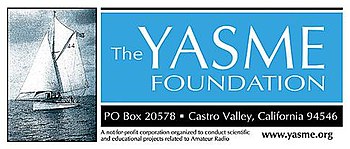Also called a “beam antenna”, or “parasitic array”, the Yagi is very widely used as a high-gain antenna on the HF, VHF and UHF bands. It has moderate to high gain which depends on the number of elements used, typically limited to about 20 dBi, linear polarization, unidirectional (end-fire) beam pattern with high front-to-back ratio of up to 20 db. and is lightweight, inexpensive and simple to construct. The bandwidth of a Yagi antenna, the frequency range over which it has high gain, is narrow, a few percent of the center frequency, and decreases with increasing gain, so it is often used in fixed-frequency applications. The largest and best-known use is as rooftop terrestrial television antennas, but it is also used for point-to-point fixed communication links, in radar antennas,[ and for long distance shortwave communication by shortwave broadcasting stations and radio armatures.
Source… Wikipedia
